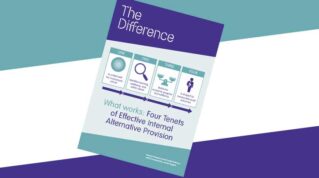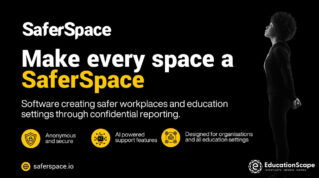As government ramps up its belonging agenda and Ofsted gears up to report on wellbeing and inclusion, the sector is finally digging into the data on participation, representation and lived experience. To do this well, we first need to unpack what disadvantage really means, rather than just assuming we already know.
Given our attendance and mental health crises, this is a positive development. But there are risks.
Notably, it will be vital to ensure the data that drives decisions in schools and in government reflects the diverse experiences of all students.
In addition, the requirement on schools to collect and make sense of yet more data could lead to poor implementation.
Based on my current doctoral research on equitable education and edtech at Bournemouth University, it’s clear to me that intentional inclusion offers a way through the first challenge, and the advent of AI could negate the second.
Behind the headlines
Headline data like overall achievement or attendance rates often obscures disparities. While these figures provide a snapshot, they fail to capture the lived experiences of marginalised students.
For example, tracking SEND attendance is important, but a more pressing question is: why didn’t they attend? More crucially, what can be done differently to support them?
Being intentionally inclusive means thinking this way about all sub-groups of students, ensuring we don’t overlook systemic barriers that hinder participation. In the first instance, it ensures our data collection isn’t in itself a cause of marginalisation.
Better questions
In these pages last week, Unity Jones argued that the quality of the questions we ask is critical in assessing engagement. This is true at the universal level of understanding what is working and what isn’t. But it is equally true at the granular level of understanding who it is and isn’t working for.
This is a problem leaders are familiar with. Free School Meals (FSM) data highlights economic disadvantage, but does not capture wider socioeconomic or cultural challenges. Coupled with systemic under-reporting, it tells us too little about poverty and its effects on our students.
So too with the causes of disengagement and feeling excluded. Intentional inclusion requires us to generate more representative data to support more targeted interventions. And that starts with asking better questions.
Understanding context
Each school operates within a unique environment shaped by its community and demographics. Strategies that work in one setting may not be effective elsewhere, even within the same trust.
For schools with high numbers of students from immigrant backgrounds, assumptions based on FSM or other broad measures may be misleading. Leaders must engage with staff, students and parents to develop a deeper understanding of their community’s needs.
Only then can we really start to formulate better questions, which lead to richer data and in turn to better-informed action.
Data overload
All of which would appear to represent a raft of additional workload, but it’s important to see this as an investment with potentially huge returns. It is also an area that is ripe for rapid change as the government’s public sector AI revolution comes online.
In my own research, I have been able to collect and analyse 1.8 million data points from 25,000 students, teachers and school staff across 350 schools. It has allowed me to identify trends and guide leadership decisions for underserved staff and students to improve equity, belonging – and ultimately outcomes for many whose voices were previously unheard.
Rather than reviewing static data at year-end, AI already allows schools who know how to use it to identify patterns as they emerge. This shift enables proactive decision-making, ensuring students receive timely support, reducing friction and ultimately workload.
However, AI is only as effective as the data it is trained on. If input data is biased or incomplete, so too will be the insights derived from it. That’s why the first step must be to ensure that data collection is ethical and intentionally inclusive.
My research shows that in the age of AI, data collection is no longer about gathering information — it’s about gathering intelligence. Used intentionally, data can be a powerful tool for driving equity and inclusion.













Your thoughts